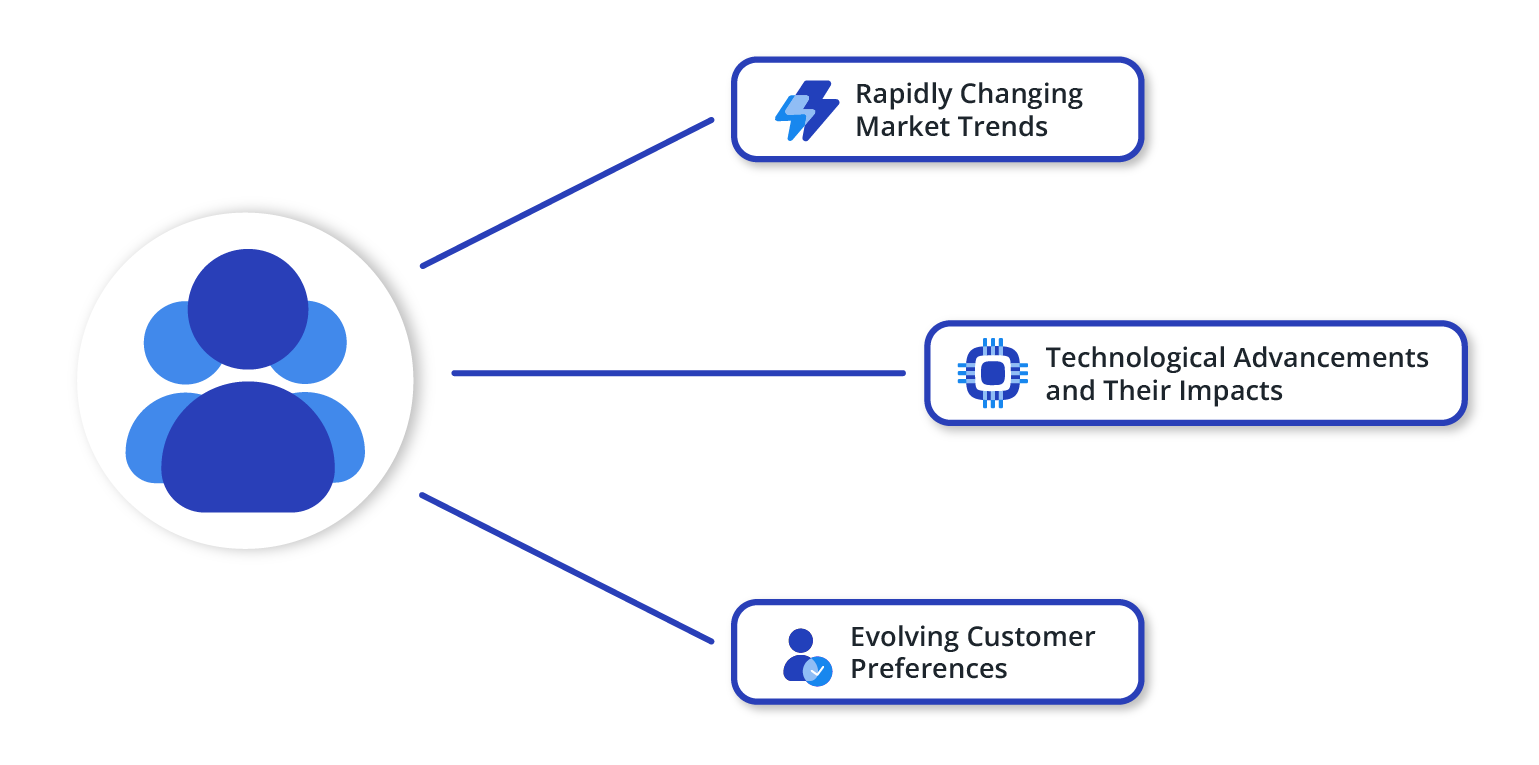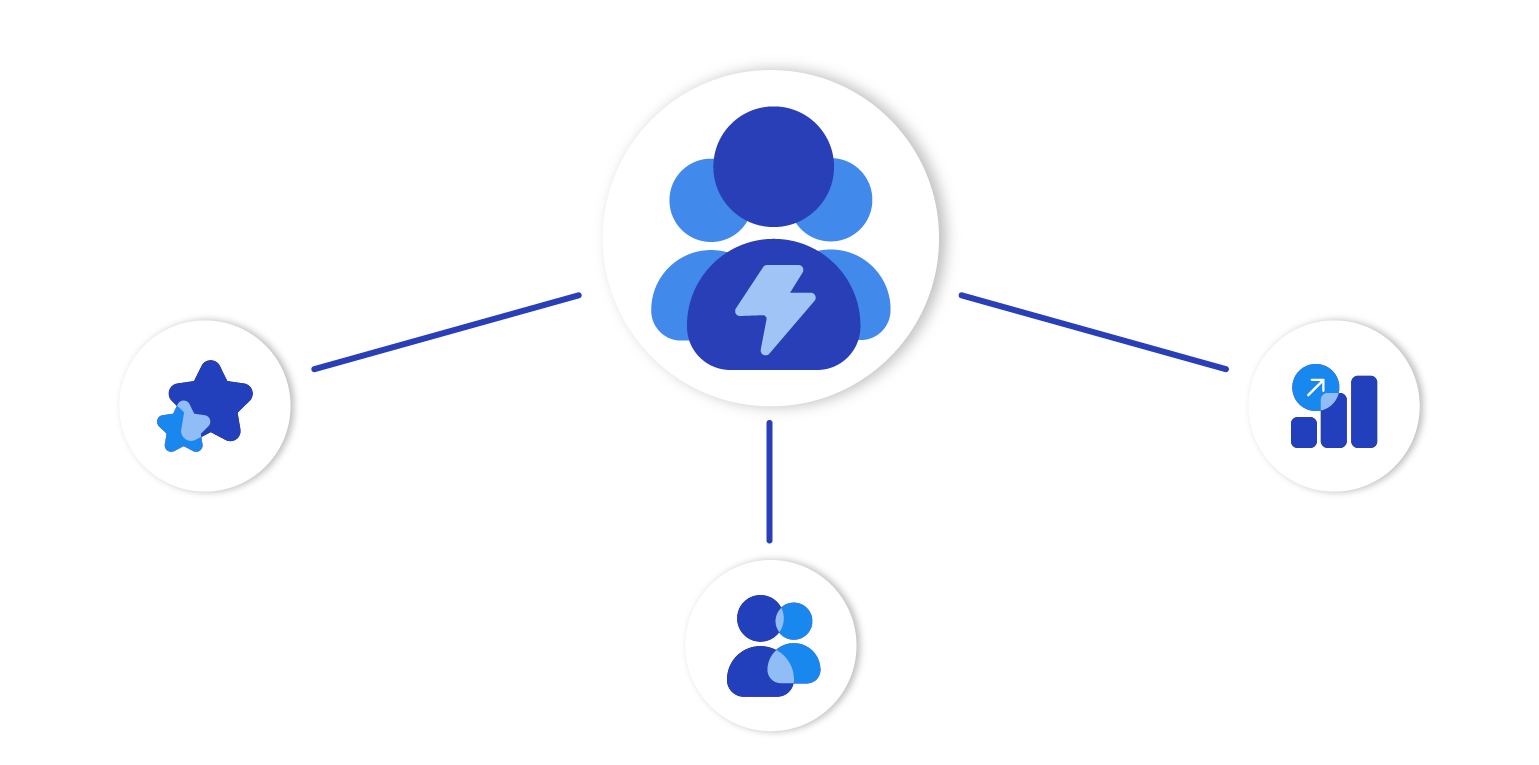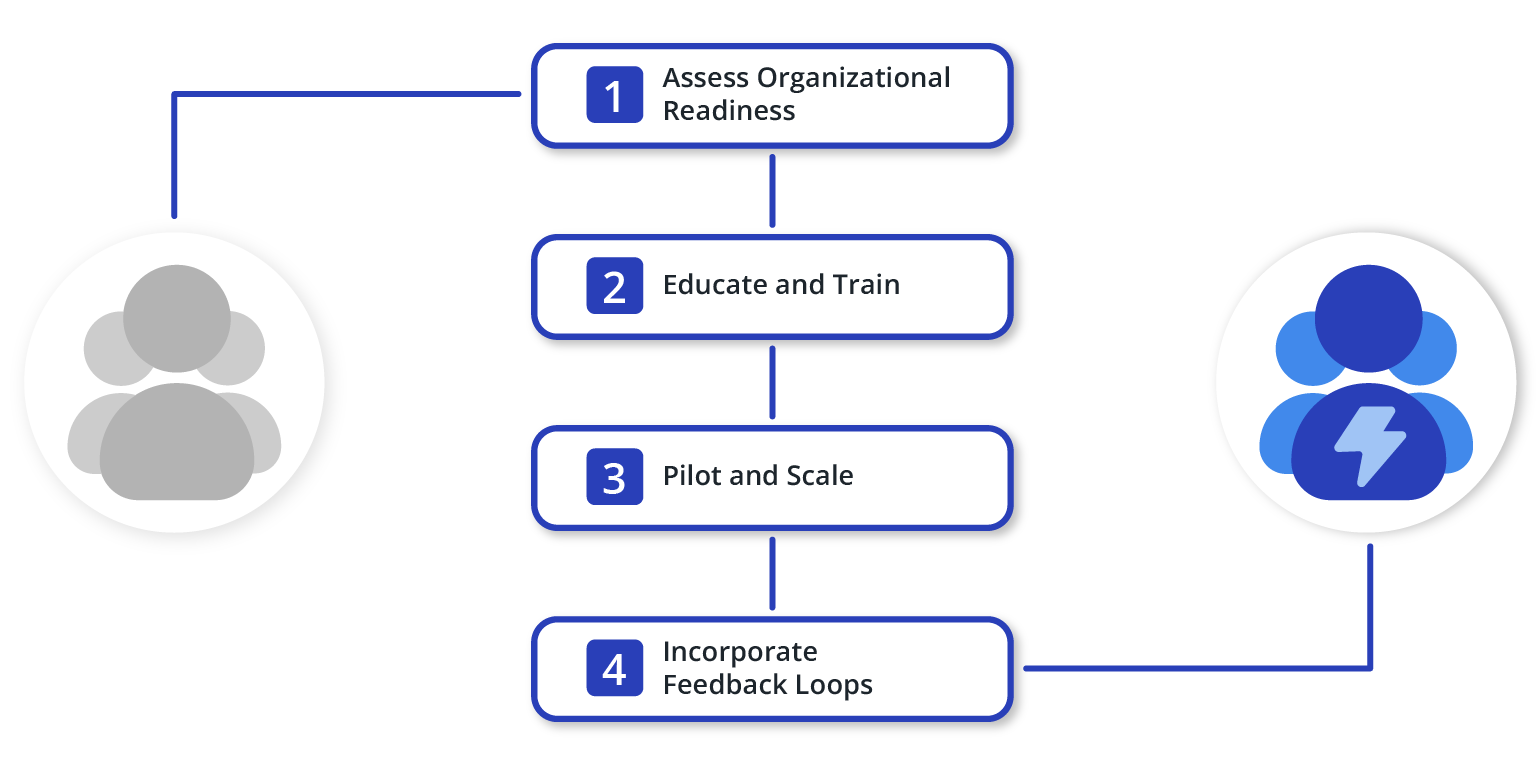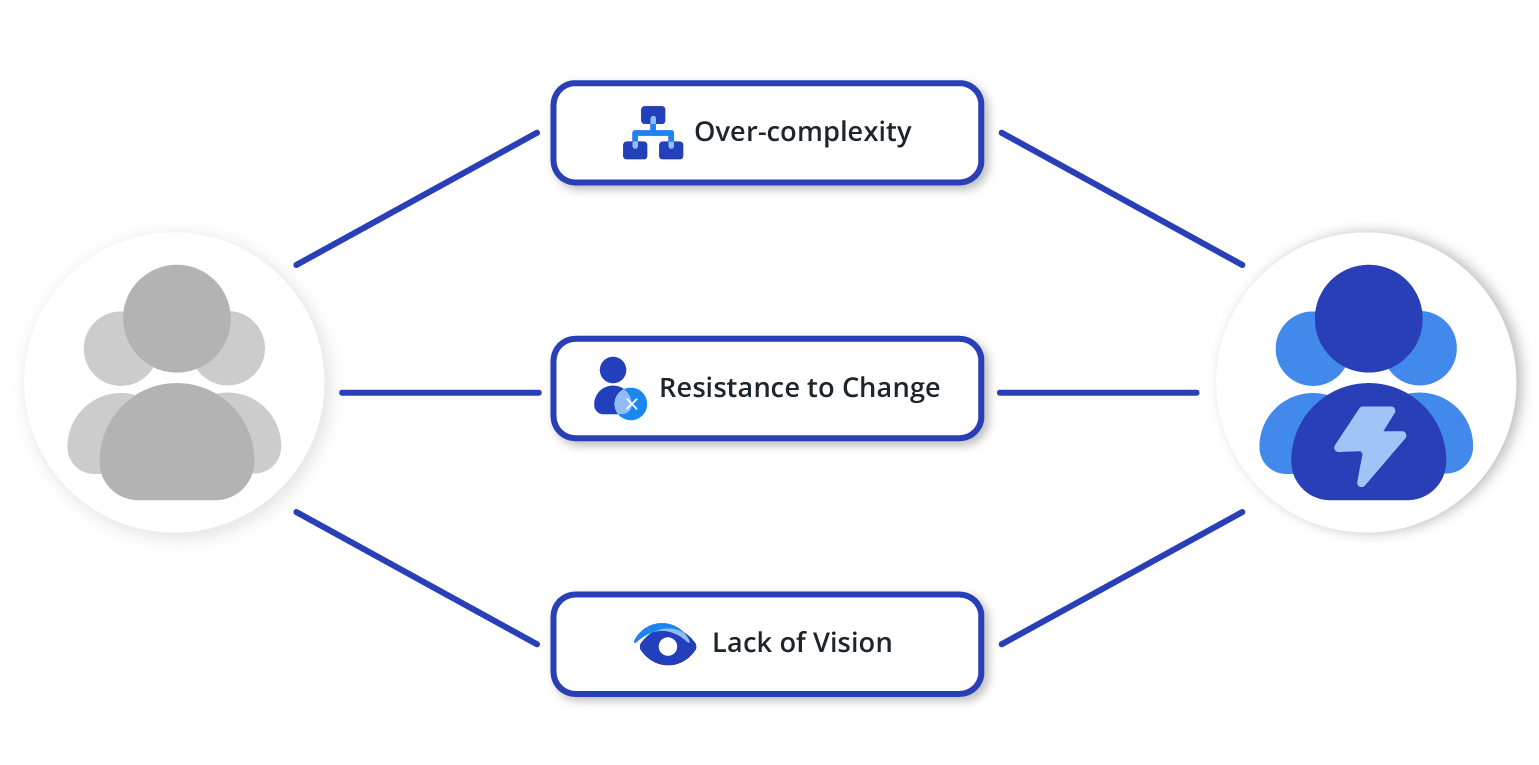“Enterprise agility” has shifted from a mere buzzword to an essential business strategy. It’s the lifeblood of organizations striving to stay ahead.
But what does it truly mean to be agile? Is it just about speed, or is there more to it?
For business leaders and consultants, understanding this concept is crucial.
Dive into this guide and uncover the essence of enterprise agility and its pivotal role in modern business.
What Is Enterprise Agility?
Enterprise agility is considered the gold standard in the modern business environment, but to truly understand its significance, we must first compare it with its counterparts: individual and team agility.
Individual agility is the ability of an employee or a leader to adapt and evolve in their roles. They may use new tools, learn new skills, or adjust to different working conditions. It’s agility on a micro-scale, impacting one’s immediate environment and tasks.
Team agility, on the other hand, takes it up a notch. It’s about a group of individuals using their collective strengths to adapt to change. Imagine a project team adjusting to new requirements or a department redirecting in response to feedback. Here, collaboration, communication, and collective problem-solving are key.
Enterprise agility, however, operates on an entirely different magnitude. It isn’t confined to one person or one team; it encapsulates the entire organization’s ability to move in tandem. It means every part of a business, from the staff to the executives, moves cohesively. They anticipate, adapt, and often lead the changes in the business sector.
While individual or team agility might respond to challenges as they arise, enterprise agility takes a dual stance: reacting to current changes and proactively preparing for future shifts. This strategic foresight and holistic adaptability set enterprise agility apart and underscore its role in driving business success.
Why Enterprise Agility Matters
Amid the volatility of the modern business landscape, enterprise agility emerges as an indispensable asset. Organizations embracing this agility can quickly recalibrate their strategies, ensuring they remain relevant and seize new opportunities presented by these changes.
This adaptability isn’t just about survival; it’s about thriving. By rapidly adjusting to changing customer needs, capitalizing on technological advancements, and navigating regulatory nuances, agile enterprises position themselves at the forefront of their industries. Those anchored to rigid structures and traditional mindsets risk falling behind.
Thus, enterprise agility isn’t just about keeping up but leading the way.
Today’s Enterprise Challenges
For businesses, understanding and overcoming present-day challenges is paramount for continued success and maintaining a competitive edge. Here are some examples.
Rapidly Changing Market Trends
Today’s globalized world sees market trends change quickly due to factors such as major global events and viral social media movements.
Companies must do more than just adapt; they must possess the agility to adjust and take advantage of new opportunities or manage unexpected risks. Success requires a mix of foresight, adaptability, and swift execution.
Technological Advancements and Their Impacts
Breakthroughs like Al, blockchain, and the Internet of Things are reshaping how businesses operate. While these technologies offer great potential, they also bring challenges. Companies shouldn’t just use these tools; they must innovate with them to drive efficiency, foster innovation, and gain a competitive edge.
Evolving Customer Preferences
Today’s consumer holds more power than ever. Empowered by information and spoiled for choice, their preferences constantly change, influenced by experiences, peers, and global trends.
Earning their trust and loyalty demands more than quality products—it requires genuine engagement, personalized experiences, and continuous improvement. Businesses must stay updated with these evolving needs to remain valuable to their customers.
Embracing Enterprise Agility: Benefits
Enterprise agility brings with it undeniable benefits. Let’s explore them below.
Staying Ahead of the Competition
In saturated markets, being good isn’t enough; businesses must be exceptional and quick. Embracing agility provides this edge. It facilitates quicker decision-making, fosters a culture of innovation, and empowers organizations to use emerging trends.
By staying agile, companies can identify and act on opportunities even before competitors notice them, setting the stage for leadership and differentiation.
Adapting to Change Efficiently
Change is inevitable, but agile businesses are masters of efficient adaptability. They’re structured to shift strategies seamlessly, reallocating resources as needed and minimizing waste. This efficiency isn’t just about being fast; it’s about precision and ensuring that every move and adjustment is purposeful and value-driven.
Enhancing Human Experiences Through Technology
At the heart of agility is a profound understanding of how technology and humans depend on each other. Agile organizations use technology not just to streamline operations but to amplify human potential.
This approach prioritizes meaningful interactions, whether simplifying tasks for employees or personalizing customer touchpoints. In essence, agility recognizes that technology’s true power lies in its ability to enhance, not replace, the human experience.
Best Practices for Implementing Enterprise Agility
Transforming into an agile enterprise isn’t just adopting new tools or methodologies—it’s a shift in mindset and operations.
Steps to Ensure Effective Adoption
Follow these key steps to ensure a smooth and effective transition.
Assess Organizational Readiness
To begin your journey to enterprise agility, first evaluate your organization’s current agility level. You’ll identify immediate improvements and more profound challenges by understanding your current processes, tools, and culture. This assessment reveals both weaknesses and strengths that can be used during the transition.
Educate and Train
For a successful transformation, everyone in the organization must share the same vision. Thus, training tailored to different levels of the organization is essential.
From leaders to staff, everyone should understand agility’s core principles. Workshops, online courses, and external consultants can fill knowledge gaps and create enthusiasm for the shift.
Pilot and Scale
Start with small changes instead of a big shift. Apply agile methods to a few teams or projects first. As they show the benefits and tackle the initial challenges, they set an example for the rest. This approach not only builds confidence in the process but also creates a blueprint for broader implementation.
Incorporate Feedback Loops
The essence of agility lies in continuous refinement. With regular reviews, organizations can continually adjust and adapt. Dynamic feedback loops involving all stakeholders ensure that the move to agility remains aligned with both internal needs and external market shifts. By fostering this culture of reflection, enterprises can continually refine their strategies.
Avoiding Common Pitfalls
Here are some common pitfalls to watch out for and how to sidestep them.
Over-complexity
There’s a misconception that adopting agile methods means layering on more processes, tools, and frameworks. But in reality, it’s trimming the fat and ensuring that each step adds value. Regularly revisit your agile processes to remove redundancies. The mantra should always be “Simplify, then amplify.”
Resistance to Change
Change, even when positive, can be met with skepticism. Some team members might cling to old ways, fearing the unknown or doubting the effectiveness of new methods.
To address this, involve everyone from the start. Discuss concerns, offer support, and highlight quick wins and success stories to demonstrate the tangible benefits of agility. This helps rally your team around the cause.
Lack of Vision
Without a clear vision, an organization can lose direction. Clearly communicate the goals and the reasons for adopting agility. Regularly remind everyone of its benefits and organize sessions to ensure alignment. When everyone understands the bigger mission, the move toward agility is more cohesive.
Kizen’s Unique Approach to Enterprise Agility
Today, agility is non-negotiable. Kizen stands out from other enterprise software by combining 100% custom enterprise neural networks and advanced cognitive technology to offer our clients a personalized approach to enterprise agility.
Unprecedented Speed and Deployment
While many companies struggle with integrating AI and automation, Kizen simplifies the process. We empower leaders to deploy AI and advanced automation faster than ever.
No more waiting for months to see results; Kizen delivers meaningful value in weeks. Even in complex, highly regulated industries, Kizen guarantees full implementation in under six months—a testament to our agility.
Tailored to Perfection
Instead of the typical one-size-fits-all approach, Kizen tailors solutions exclusively for each business. Regardless of how many complexities or regulatory constraints are involved, Kizen adapts to be your organization’s perfect solution. This level of personalization ensures enterprises aren’t just getting a tool—they’re getting their tool.
The Power of Custom Neural Networks
What truly separates Kizen is our unique ability to design, connect, and deploy custom enterprise neural networks to seamlessly integrate all your organization’s critical technology and data.
This allows unprecedented levels of automation and collaboration across teams, ensuring organizations get the highest ROI from their tech investments and enjoy benefits that go beyond traditional technology solutions.
By combining the most advanced cognitive technology with a deep understanding of the needs of modern businesses, Kizen is not only setting the standard for agility—we’re redefining it.
The Imperative of Enterprise Agility in Modern Business
The role of enterprise agility has shifted from a competitive advantage to an absolute imperative. As we’ve uncovered, agility empowers organizations to quickly adapt to market changes, harness new technologies, and meet changing customer needs. It shows the way to innovation and resilience in a constantly evolving landscape.
Looking ahead, the stakes only get higher. As business becomes even more unpredictable, agility will be the catalyst propelling forward-thinking organizations like yours from mere survival to robust growth.
Ready to embrace this agile future? Take the leap with Kizen. Reach out to us today, and let’s redefine what’s possible for your enterprise.











